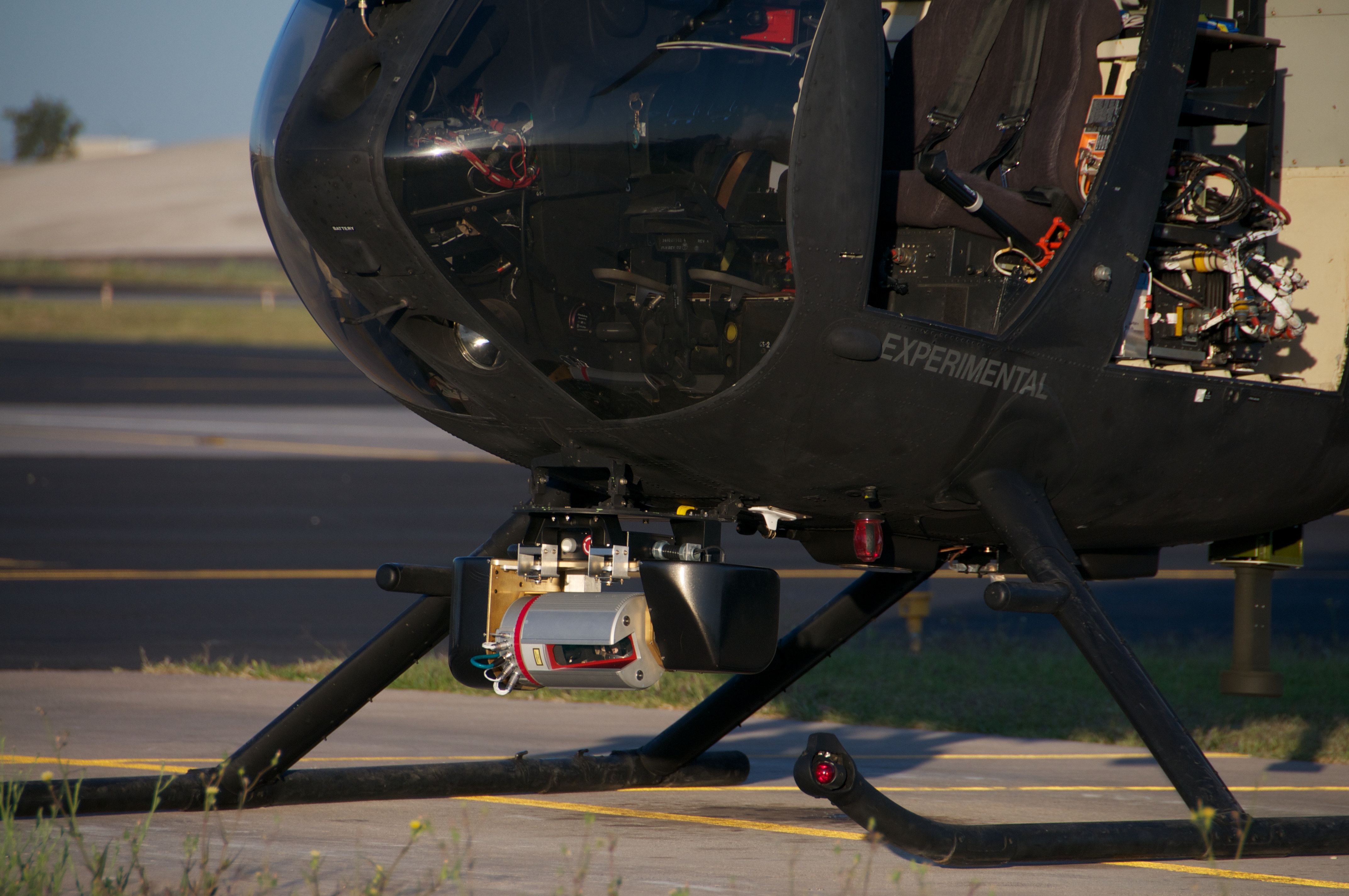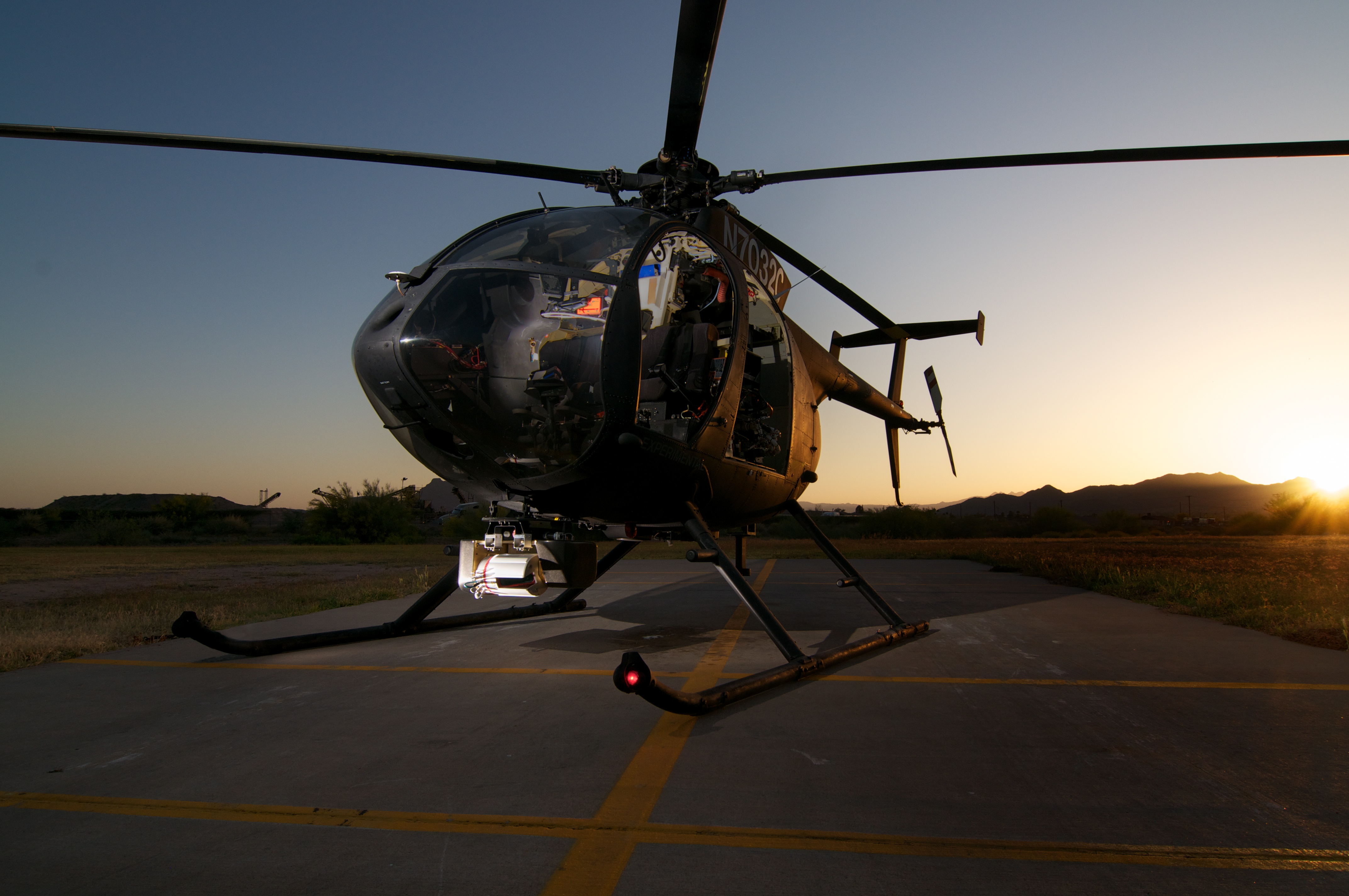Piasecki-Carnegie Mellon Team Demonstrates Autonomous Helicopter Operations
Byron SpiceTuesday, July 6, 2010Print this page.

Piasecki Aircraft Corp. and Carnegie Mellon University have developed and flight demonstrated a navigation/sensor system that enables full-size, autonomous helicopters to fly at low altitude while avoiding obstacles; evaluate and select suitable landing sites in unmapped terrain; and land safely using a self-generated approach path.
Autonomous flight at low altitude and landing zone evaluation/selection is an unprecedented feat with a full-size helicopter. This technology has been developed to allow future unmanned helicopters to evacuate wounded soldiers from contaminated or live-fire battlefields and to resupply forward military bases. The technology is also applicable as a pilot aid to help both military and civilian pilots avoid obstacles, such as power lines, and select landing sites in unimproved areas such as emergency scenes, even when operating in low-light or low-visibility conditions.
In mid-June, the Piasecki/Carnegie Mellon team flight tested the navigation/sensor system at the Boeing Company's Rotorcraft Systems facility in Mesa, AZ, using the Unmanned Little Bird helicopter test bed (Fig.1). The Piasecki/Carnegie Mellon sensor package and navigation, mapping and collision avoidance software repeatedly demonstrated the ability to land in cluttered environments. In each case, the navigation/sensor system had to map an unknown area where large and small obstructions limited the possible landing sites- circumstances typical of a military or civilian medical evacuation mission. The system was able to reliably identify level landing sites with clear approach paths that were accessible for evacuating a simulated casualty.
The system also was able to detect and maneuver around a manlift extended to a height of 60 feet while flying at a speed of more than 20 knots (Fig 2). Flight tests also demonstrated the sensor package was able to detect high-tension wires over desert terrain.
The demonstration was the culmination of work sponsored by the U.S. Army's Telemedicine and Advanced Technology Research Center (TATRC) through a Small Business Innovation Research (SBIR) program with Piasecki Aircraft and Carnegie Mellon's Robotics Institute, supplemented with significant additional funding from Piasecki.
Today's unmanned helicopters can only fly autonomously in mapped areas known to be free of obstructions. The new sensing and navigation capability demonstrated under this project will make unmanned helicopters far more useful and safer allowing them to operate in the near earth obstacle rich environment, where only manned helicopters have traditionally been able to fly at great risk.
The Piasecki/Carnegie Mellon team developed a sensor package that includes inertial sensing and an advanced laser scanner that can look forward or down, depending on flight parameters. Paired with mapping and obstacle avoidance software, these sensors build 3-D maps of the ground and find obstacles in the aircraft's path. In the tests at the Mesa facility, the sensors demonstrated that they could detect four-inch-high pallets, chain link fences, vegetation, people and other objects that could block a potential landing site. The laser scanner is effective even when dust obscures the landing site, as often occurs during operations in desert terrain.
Navigation and planning software developed at Carnegie Mellon for use in robotic ground vehicles was adapted for use in the air, enabling the helicopter to continuously identify potential landing sites and develop possible landing approaches and abort paths. The system is programmed to select a safe landing site that is closest to a given set of coordinates, such as the location of a casualty or a drop-off point for resupply. The software keeps a running rank of the possible landing sites and approach/abort paths, enabling the aircraft to respond rapidly to unexpected developments on the ground and in the air.
"Operation at low altitudes is where helicopters are most valuable, but also where they are most vulnerable," said Sanjiv Singh, Research Professor in Carnegie Mellon's Robotics Institute. "Demonstrating that a fullscale robotic helicopter can safely takeoff, fly at low altitude and land heralds a new era when we can significantly reduce risk, either by giving a pilot new aids for avoiding mishaps or by eliminating the pilot entirely."
Most previous research projects involving low altitude flight by robotic helicopters have used small aircraft, which have different flying characteristics than a man-capable craft such as the 10-meter-long ULB. Singh said the performance of the sensor/navigation package on the full-scale ULB indicates that scaling it to even larger craft will pose no problem.
The Government Project lead for this effort is Dr. Gary Gilbert, TATRC. The Piasecki/Carnegie Mellon team was led by Fred Piasecki, Principal Investigator, and Singh. Team members include Robotics Institute staff member Lyle Chamberlain, Lead Test Engineer, Sebastian Scherer, a robotics PhD student and Software Lead, Jim Cline, Airframe Integration Design Lead, and Buzz Miller, Project Coordinator.


Byron Spice | 412-268-9068 | bspice@cs.cmu.edu
